|
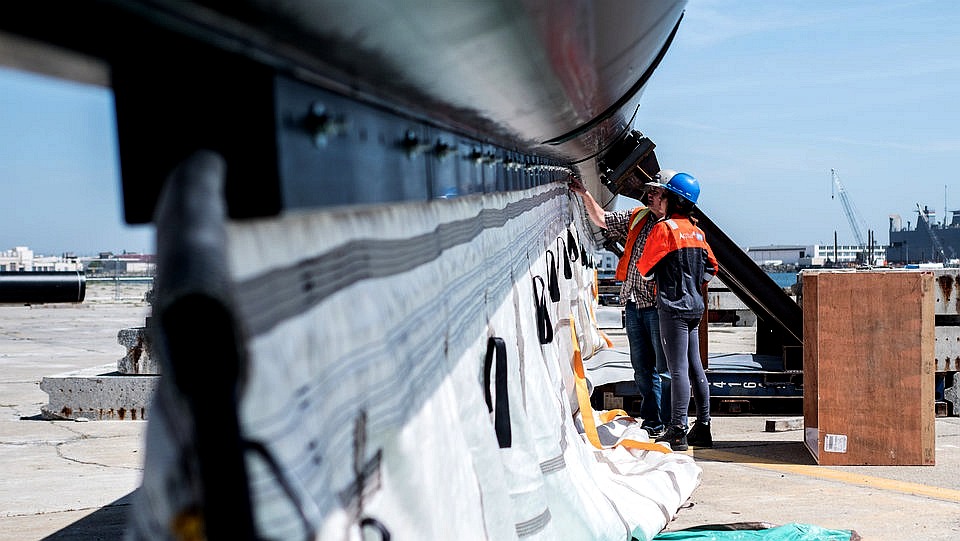
A 100-metre segment went through a test in the
North
Sea, off the coast of the Netherlands in the summer of
2016.
The purpose was to test the endurance of the materials chosen and the connections between elements. The test indicated that conventional oil containment booms could not endure the harsh environments the system would face.
They changed the floater material to a hard-walled
High Density Polythene (HDPE) pipe,
deemed to be flexible enough to follow the waves, and yet rigid enough to maintain its open U-shape. More prototypes were deployed to test component endurance.
In September and October 2016, The Ocean Cleanup launched its Aerial Expedition, in which a C-130 Hercules aircraft conducted a series of aerial surveys of the
Great Pacific garbage
patch. The goal was specifically to quantify the amount of large debris, including
ghosts nets in the patch. Slat stated that the crew saw a lot more debris than expected.
The project released an app called The Ocean Cleanup Survey App, which enables others to survey the ocean for plastic, and report their observations to The Ocean Cleanup.
The Ocean Cleanup is non-government engineering environmental organization based in Netherlands, that develops technology to extract plastic pollution from the oceans.
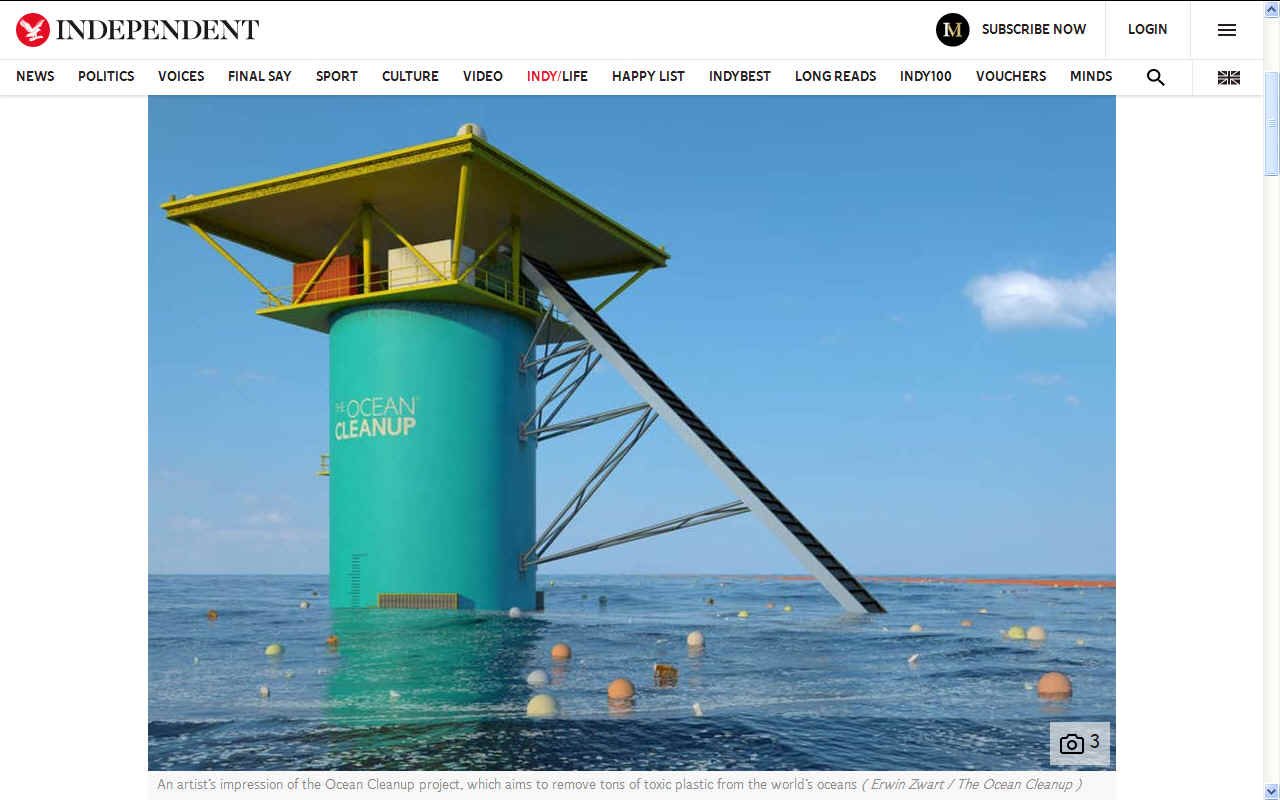
THE INDEPENDENT 19 JANUARY 2016 - How scientists plan to clean up plastic waste threatening marine life
It is estimated that about eight million tons of plastic debris are being washed into the oceans each year.
Scientists have worked out the best way of removing the millions of tons of plastic waste floating in the oceans – a time bomb that threatens to
poison the marine ecosystem.
It is estimated that about eight million tons of plastic debris such as food packaging and plastic bottles are being washed into the oceans each year, where it is broken down into smaller “microplastics” that act as a magnet for chemical toxins ingested by the smallest sea creatures.
The cumulative amount of plastic in the ocean is set to increase tenfold by 2020, with the consequences extending centuries into the future because of the length of time it takes for plastics to biodegrade – resulting in calls for a global initiative to collect plastic waste floating on the sea surface.
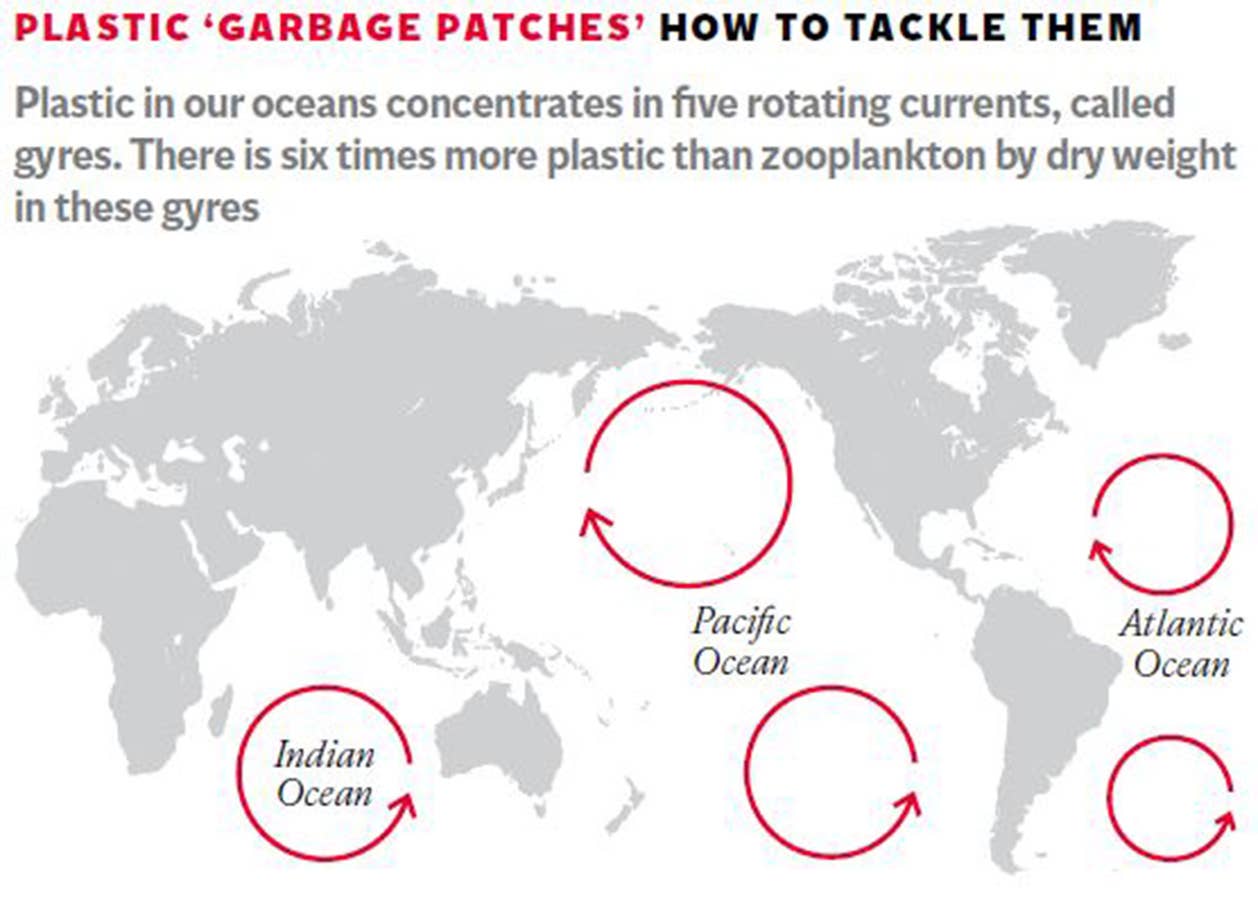
There is already an ambitious, crowdfunded plan to gather plastic waste circulating in a huge “garbage patch” in the middle of the
Pacific Ocean using 100km-long, inflatable booms aligned across sea currents. But a new study suggests that this will be far more effective if carried out near densely-populated coastlines, especially off China and Indonesia, where much of the waste enters the sea.
The so-called Great Pacific garbage patch is a highly visible illustration of the scale of the global problem. However, the researchers believe it would be better to tackle the clean-up nearer to its source on land, where an equivalent of five grocery bags of plastic is being dumped each year on every foot of coastline in the world, say scientists.
The study, carried out by a team at Imperial College London, compared two hypothetical methods of collecting marine plastic over a 10-year period between 2015 and 2025 – either by skimming the waste from the middle of the ocean or by positioning the collecting booms just off the coast near densely-populated areas.
Computer modelling suggested that placing collecting devices nearer the coasts would remove about 31 per cent of microplastics – the smaller plastic chips and fibres that result from the environmental breakdown of larger items.
However, when all the collecting booms are placed inside the circulating, mid-ocean garbage patches, only 17 per cent of microplastics would be removed, according to the study published in the journal Environmental Research Letters.
“It makes sense to remove plastics where they first enter the ocean around dense
coastal economic and population centres. It also means you can remove the plastics before they have had a chance to do any harm. Plastics in the patch have travelled a long way and potentially already done a lot of harm,” said Erik van Sebille of Imperial College, who led the work.
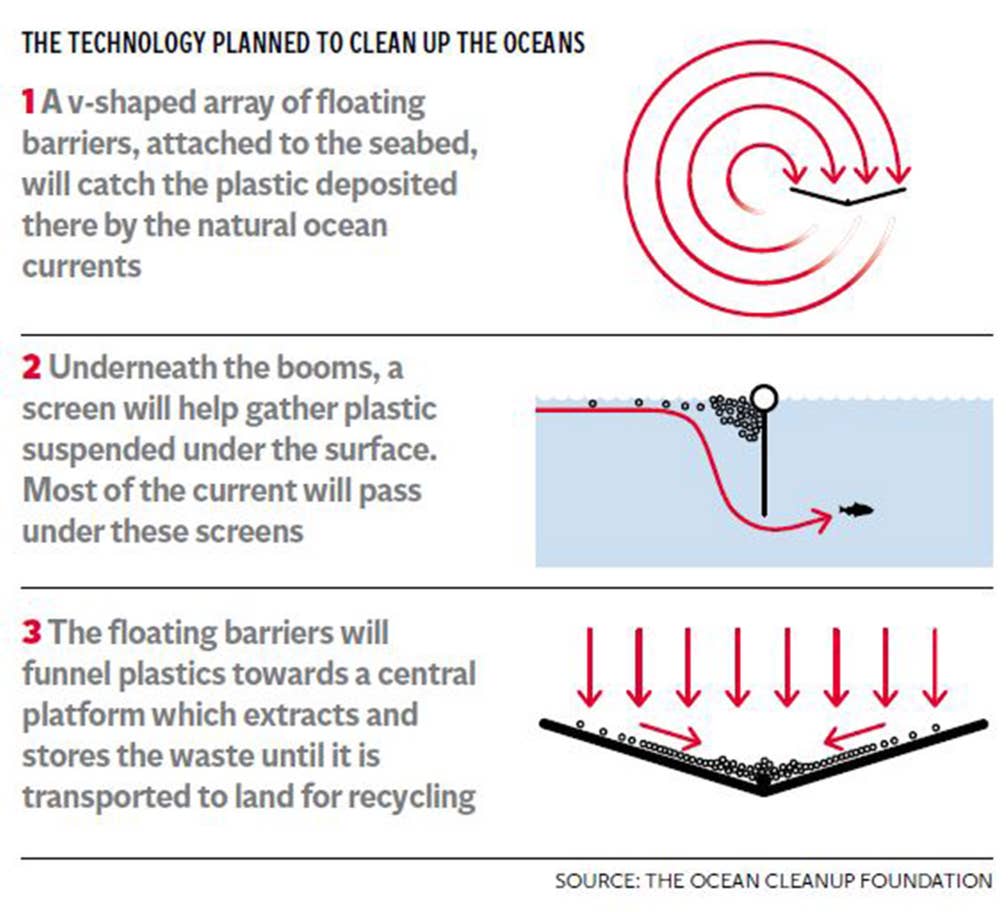
Although there is a huge mass of plastic waste circulating in the the ocean “gyres” – circular ocean currents – it would be more efficient to tackle the problem from where most of the waste enters the sea in the first place, which coincidentally is richer in marine wildlife, said Peter Sherman, an undergraduate physics student involved with the study.
“The Great Pacific garbage patch has a huge mass of microplastics, but the largest flow of plastics is actually off the coasts, where it enters the oceans. There is a lot of plastic in the patch, but it’s a relative dead zone for life compared with the richness around the coasts,” Mr Sherman said. “We need to clean up ocean plastics, and ultimately this should be achieved by stopping the source of pollution. However, this will not happen overnight, so a temporary solution is needed, and clean-up projects could be it, if they are done well.”
A study last year of 192 countries found that most of the plastic waste in the oceans comes from people living within 50km of the coastline. It estimated that 275 million tons of plastic waste is generated each year around the world and between 4.8 million and 12.7 million tons ends up either being washed or dumped deliberately into the sea.
Another analysis found that 90 per cent of seabirds have swallowed plastics and that these birds are concentrated around coastlines.
Predictions of how the quantity of plastic waste will increase took into account the growing industrialisation of developing countries,
population growth and attempts to limit the flow of plastic debris into the oceans based on waste-management activities on land.
By Steve Connor Science Editor
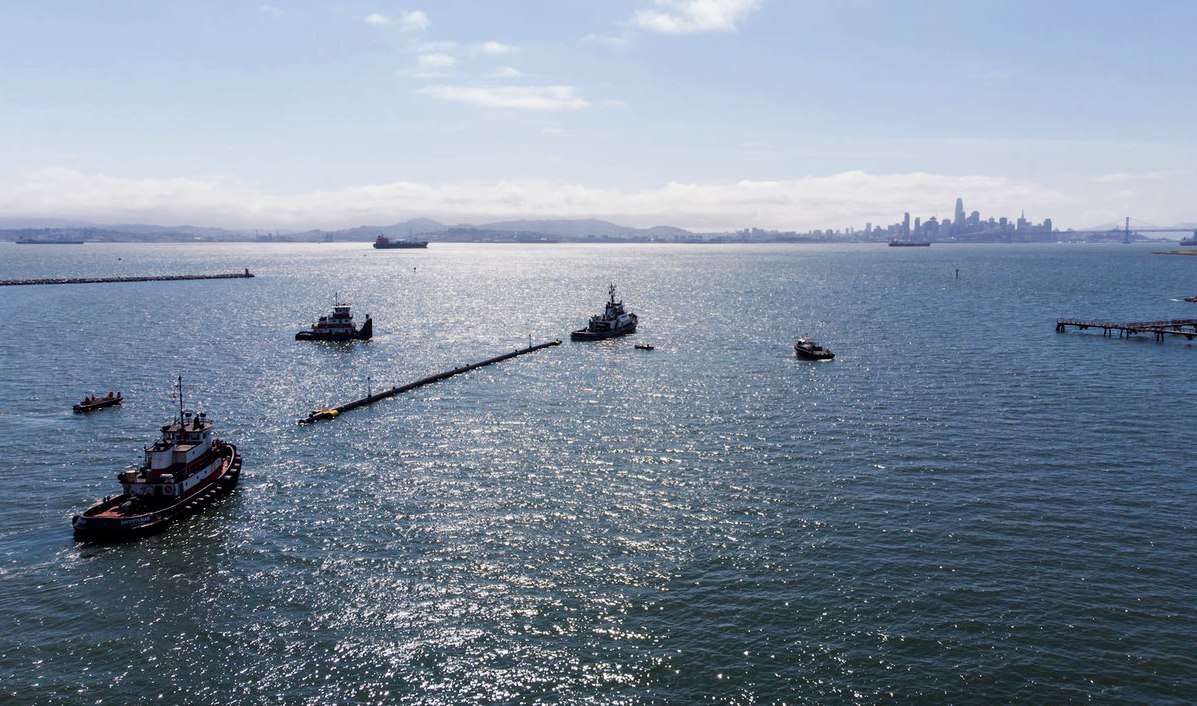
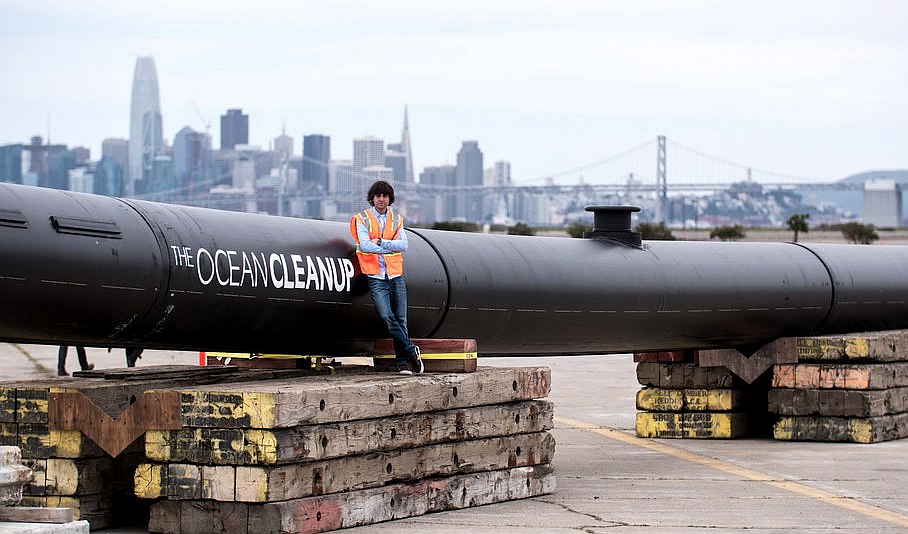
Boyan
Slat is not alone in the fight against ocean plastic. These
emerging technologies could all play a part in
containing the mountain of plastic that is accumulating on the oceans
floors, by recovering floating debris before it sinks. New ideas are
welcomed.
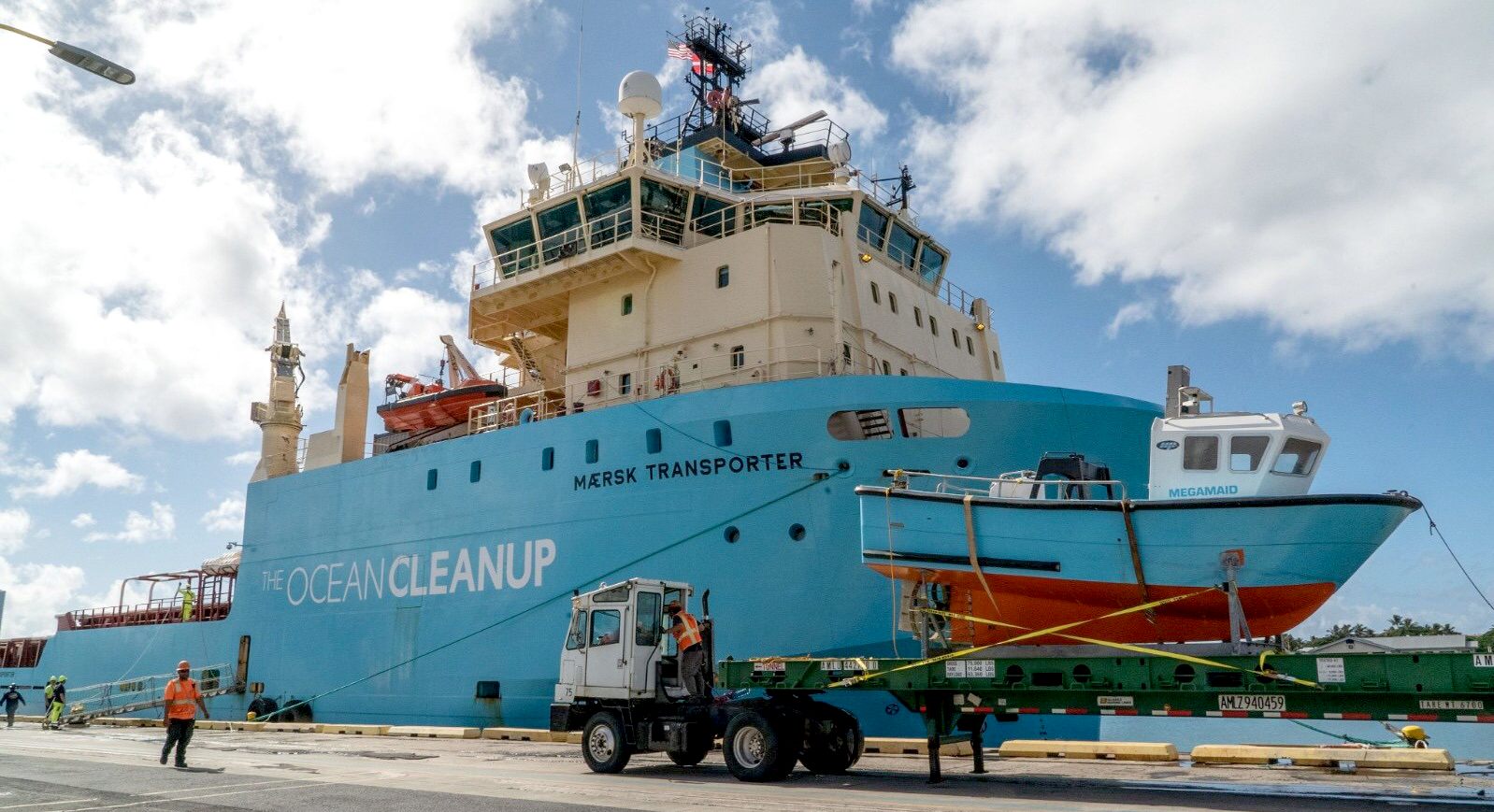
PROJECT
HISTORY 2012 - 2021 2012
- TED Talk 2013
- Company Formation 2014
- Concept Revisions 2015
- Scale Model Tests 2016
- North Sea Trial 2017
- Pipe Size Reduction 2018
- Wilson & Scale Test 2019
- Sea Trials Pacific 2019
- River skimming barges 2020
- The Future 2021
- Qualified success Sept 16 (Reuters) OCEAN
CLEANUP PROJECTS
*
Aliance
to end Plastic Waste
*
Boyan
Slat's ocean booms
*
4Ocean recycled plastic bracelets
*
Kulo
Luna graphic novel
*
Ocean
Voyages Institute
*
Ocean Waste Plastic
*
Seabin
*
Sea Litter
Critters
*
SeaVax autonomous drones
*
World Oceans Day

LINKS
& REFERENCE https://www.independent.co.uk/environment/nature/how-scientists-plan-to-clean-up-the-plastic-waste-threatening-marine-life-a6820276.html https://theoceancleanup.com/
8
September 2018 The
World’s First Ocean Cleanup System Launched from San Francisco
22
March 2018 Great
Pacific Garbage Patch Growing Rapidly, Study Shows
21
December 2017 Research
Shows How Plastic at Sea Turns into Toxic Fish Food
7
June 2017 First
Estimate to Quantify Global Plastic Input from Rivers into Oceans
11
May 2017 The
Ocean Cleanup Announces Pacific Cleanup to Start in 2018
WIND
AND WAVES
-
The floating boom systems are designed to capture plastics ranging from small pieces just millimeters in size, up to large debris, including massive discarded fishing nets (ghost nets), which can be tens of meters wide.
Models show that a full-scale cleanup system roll-out (a fleet of approximately 60 systems) could clean 50% of the Great Pacific Garbage Patch in just five years.
After fleets of systems are deployed into every ocean gyre, combined with source reduction, The Ocean Cleanup projects to be able to remove 90% of ocean plastic by 2040.
The system consists of a 600-meter-long floater that sits at the surface of the water and a tapered 3-meter-deep skirt attached below. The boom floater provides buoyancy to the system and prevents plastic from flowing over it, while the skirt stops debris from escaping underneath.
Both the plastic and system are being carried by the currents. However, wind and waves propel only the system, as the floater sits just above the water surface, while the plastic is primarily just beneath it. The system thus moves faster than the plastic, allowing the plastic to be captured.
It's a giant version of fishing nets as used for centuries by fishermen. A secondary net and modified fishing vessels then capture and land the plastic on a vessel where it is transported to land for recycling.
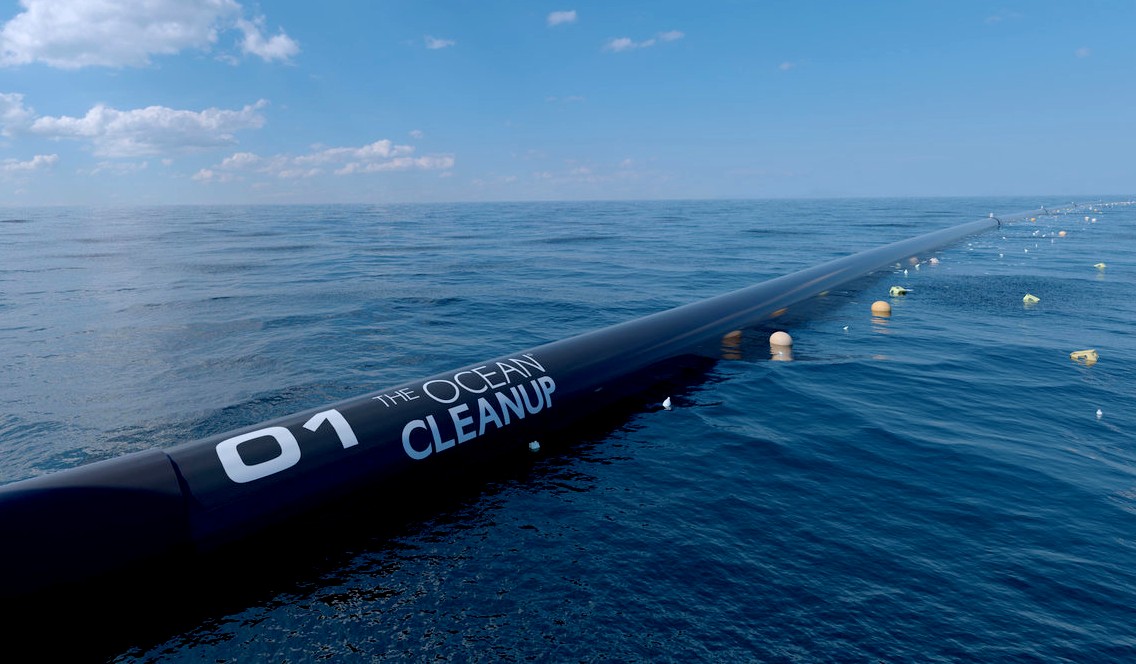 |








